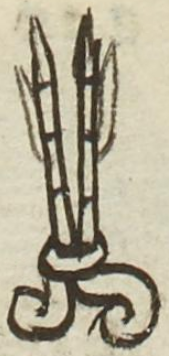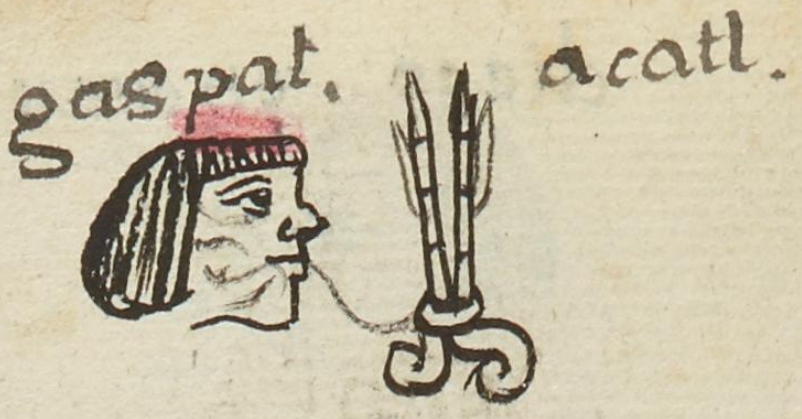Acatl (MH677r)
This black-line drawing of the simplex glyph for the personal name Acatl (“Reed”) is attested here as a man’s name. The glyph shows a frontal view of a plant with two stalks of reed or cane (acatl) of the type called carrizo in Mexican Spanish today. Each stalk has four segments and one small vertical leaf.
Stephanie Wood
Acatl is a day sign in the religious divinatory calendar of 260 days. Normally, the name acatl would have been accompanied by a number from 1 to 13. By the time of this manuscript, 1560, the numbers were often falling out of use, or else the number would remain (such as macuilli) and the day sign might drop away. Acatl glyphs have a diverse range of styles, including cut canes, arrows, and living reeds with leaves. Roots are sometimes visible, sometimes not. The canes or reeds are typically segmented, something like bamboo.
Stephanie Wood
1560
Jeff Haskett-Wood
calendarios, nombres de días, plantas, cañas, nombres de hombres

aca(tl), reed or cane, https://nahuatl.wired-humanities.org/content/acatl
Caña
Stephanie Wood
Matrícula de Huexotzinco, folio 677r, World Digital Library, https://www.loc.gov/resource/gdcwdl.wdl_15282/?sp=434&st=image.
This manuscript is hosted by the Library of Congress and the World Digital Library; used here with the Creative Commons, “Attribution-NonCommercial-ShareAlike 3.0 License” (CC-BY-NC-SAq 3.0).







